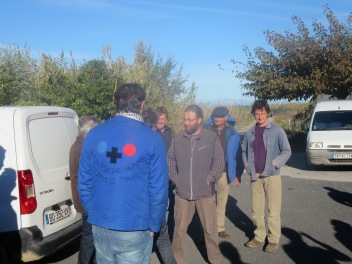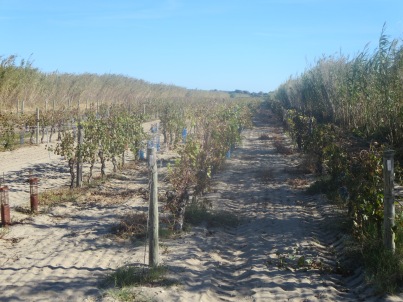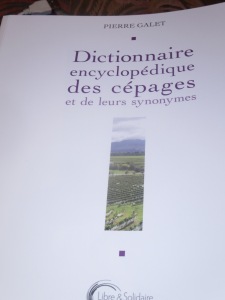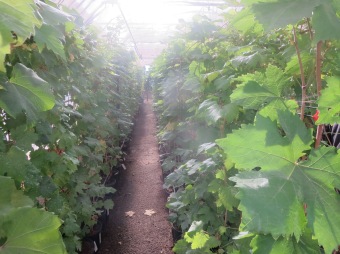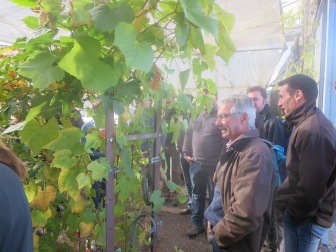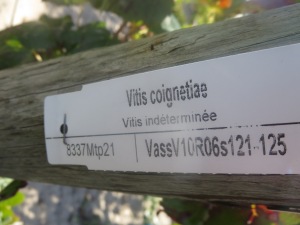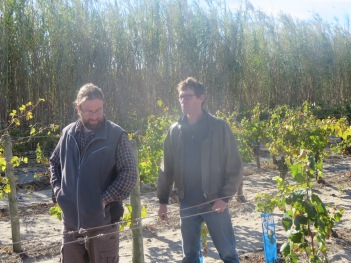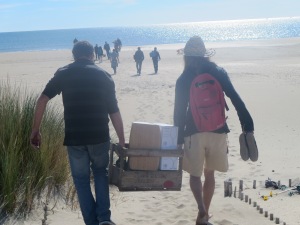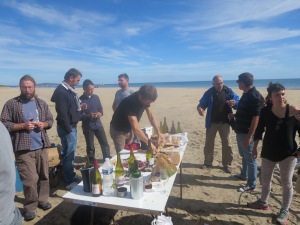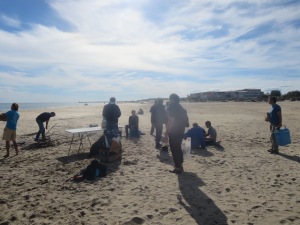
This chart was published two weeks ago even though the information refers to 2010. I found it fascinating (I am a sad case I understand). Some of the information would be expected, New Zealand with its Sauvignon Blanc for example, Australia with its Shiraz. I was rather surprised to see Merlot as 13.7% of the French vineyard area however. Admittedly this is partly because it is one of my least favourite grape varieties, though, as always, fine examples are available from good vignerons.
Merlot, like Cabernet Sauvignon, Chardonnay and Viognier, were in vogue in the 80s and 90s when I became interested in wine. Languedoc producers reacted to this popularity by planting these cépages, it was commercial sense. One of those producers was Jean-Claude Coutelou and Mas Coutelou still has his Cabernet and Merlot parcels.
However, one of the more recent trends in the region has been the revival of older and rare grape varieties. At Mas Coutelou Jeff has planted grapes such as Riveyrenc Noir, Riveyrenc Gris, Morastel, Piquepoul Noir and Terret Noir in Peilhan (see photos below).
Earlier this year Jeff received a visit from Domaine De Vassal, guardian of the national treasury of grape vines. They record and keep examples all grape varieties as I described after a visit to Vassal. On this occasion they were intrigued by two vines in particular; firstly Clairette Musquée, planted in Peilhan and, secondly, the unknown variety in Segrairals. These are just part of the programme of replanting and grafting which has taken place at Mas Coutelou. The photos below show grafting of other cépages in Flower Power such as Aramon Noir and one unknown variety.
After months of research the experts at Vassal have concluded that Clairette Musquée has its origins in Hungary where it was known as Org Tokosi. It was planted in the Maghreb and after Algerian independence it was probably brought to France by those who repatriated to France.
The unnown variety turns out to be an Italian cépage, quite rare, called Delizia Di Vaprio. This is, according to my copy of Pierre Galet’s “Dictionnaire Encyclopédique des Cépages”, a grape authorised in Italy and Portugal. Under the rules of France’s AOC system it would not be allowed. Jeff, however, chooses to issue his wines under the Vin De France label which means he is free to choose his own methods and grape varieties. Whereas a Languedoc AOC wine must include grapes such as Syrah and Grenache Jeff can choose what to put in his wines including wines from just one grape variety. It also means he can plant these rare grapes and make wines from them which he truly loves and wants to make.

Interestingly one AOC, Burgundy, is starting to show signs of concern that Vin De France is becoming more popular. They have started a campaign criticising Vin de France. To my mind they should be looking to their own failings and regulations. For example, as climate change bites harder vignerons will have to adapt, investigating different grape varieties will be part of that.
So, yes Merlot has its place (and thrives in the Colombié vineyard in Puimisson) but is it not exciting to see rare, old, traditional grapes being cherished and brought back to prominence? Let us appreciate the range and variety of grapes and the vignerons who bring out their best.








